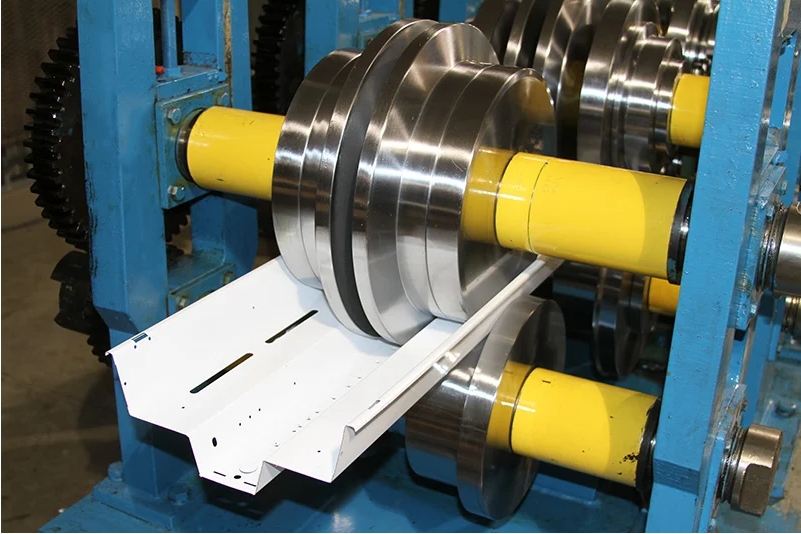Navigation Menu
Contact Us
- Email:
- info@wxavatar.com
- Address:
- Yurong Village, Yuqi Street, Huishan District, Wuxi, China.
Release Date:Jan 13, 2025 Visit:46 Source:ROLL FORMING MACHINES LTD
The roll forming process involves continuous bending operations of a long strip of metal sheet that passes through successive sets of rolls, each performing an incremental portion of the bend until the desired cross-sectional profile is achieved. The process is widely used across industries for its efficiency, precision, and versatility. In recent years, cold-formed steel has become a game-changer in the construction industry, with thin-walled profiles being used as structural elements of buildings, saving a great deal of time and money, thereby optimizing the traditional framing process.
The key operations of roll forming are summarized below
Rolling
Cutting
Notching
Punching
Forging
Flattening
Dimpling
Each operation involves a series of tool sets, which are also described in detail in this article.
Rolling
The rolling process is the basis of roll forming, which is a continuous process used to create long metal shapes with a specific cross-sectional profile. The process involves the gradual deformation of a metal sheet or strip through a series of precisely designed rolls. The individual entities within the roll forming machine contribute to its efficiency and precision. These entities include:
Rolling Stations
Decoiler
Hydraulics
Electrical
Software
Tool Head
Rolling Stations
The number of rolling stations determines the type of profiles produced by the roll former. The rolling stations help to form the various bends within the roll former and help to create stiffening ribs along the web of the profile. During this stage, the metal strip is gradually formed into the desired profile by a series of rollers. The rollers are strategically designed and spaced as per the roll forming principles to ensure precision and consistency while optimizing production output.

Decoiler
Automated decoilers store and unwind the steel coils into the roll former in a seamless manner without the need for human intervention, thus helping to achieve a continuous input of steel into the roll former for production. Scottsdale and Knudson of Scottsdale have decoilers with capacities ranging from 1500 kg to 4500 kg. Customers can choose from a variety of decoilers depending on their application and needs.
Hydraulics
The hydraulic system is an essential part of the roll forming process. Operations such as cutting, notching and punching are powered by hydraulics within the roll forming machine. The speed, efficiency and precision of these operations are largely dependent on the performance of the hydraulic system.
Electrical
The electrical system is the nerve of any roll forming machine, acting as a communication and control center to ensure the smooth operation of the entire machine. Just as nerves transmit impulses to enable the human body to perform its functions, a strong electrical system is essential to coordinate the various components of the roll forming machine. These systems manage motor drives, sensors, PLCs (programmable logic controllers) and safety devices to ensure synchronization, precision and safety during operation. A well-designed electrical system minimizes downtime, increases productivity and accommodates different production requirements. The electrical cabinet, which typically houses these critical components, is an example of the complex control network necessary for seamless roll forming performance.
Software
Custom software packages are required to automate roll forming operations. This includes cutting profiles to length, punching holes at specified locations, making dimples at specified angles for connecting members, notching members for intersecting connections, crimping ends to form bearing connections, etc. These intelligent operations at predetermined locations are cumbersome to perform manually in the roll former, so the software package plays a vital role in communicating these operations to the roll former.